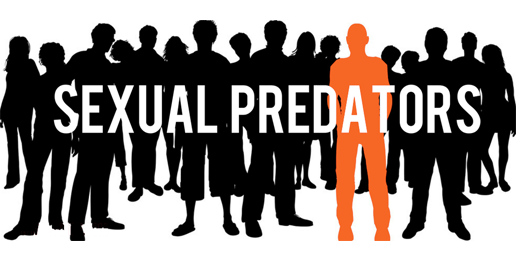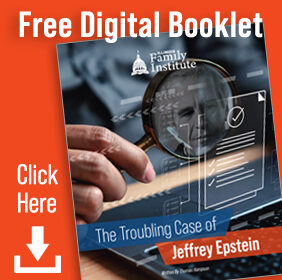
But whoever causes one of these little ones who believe in me to sin,
it would be better for him to have a great millstone fastened around his neck
and to be drowned in the depth of the sea. ~Matthew 18:6
Years ago, the stereotype of a child molester was that he was a weird-looking loner easily identified by his idiosyncratic appearance and manner. If that was true, it might have been easier, then and now, to keep children safe from them.
But it is not true.
So, who are the predators, and how do we defend our children from them? Are they all the same? Does their appearance give us any clue? What motivates them? What gives them pause? How do we shield children from them? How do we equip our children to resist?
To begin with, child predators are not all the same. They have different motivations, different preferences, different personalities, different in a multitude of ways. They have one thing in common: sexual desires that became twisted somewhere along the path of their life.
There also are different types of child predators. Essentially, there are four—the mentally ill molester, the experimenter, the situational molester, and the preferential child molester. Of these four, the preferential molester is the most dangerous and the most prolific. According to an in-depth study by Gene Abel and Nora Harlow, “The Abel and Harlow Child Molestation Prevention Study,” the preferential molester is responsible for 88 percent of the child victims and commits 95 percent of the instances of abuse (page 2 of the study). The preferential child molester, in addition to preferring sexual partners that are underage, also tends to be a psychopath, a person who has no conscience or qualms about violating any norm or standard so long as they get what they want.
If we neutralized the preferential molester, the problem would largely evaporate. But we can’t ignore the other three types because some will become the preferential molesters, particularly the experimenters.
Not all child molesters were molested themselves. At least half acquired the aberrant desire from some other sexual trauma or, most likely, from fantasies often driven by visual or verbal pornography at a young age. The experimenter usually emerges sometime after puberty, but some can begin to experiment earlier. Experiencing sexual pleasure is not dependent on puberty; some children are exposed early to that reality. They can become hooked, literally, on the neurochemicals released during sexual stimulation and activity.
Some of these experimenters can become sex addicted due to the experimentation. Depending on the fantasies they act out, that addiction can be directed at same sex—same age, opposite sex—same age, or toward younger children. The more children are exposed to sexual content in the movies, on tv, in school, in libraries, the more children will begin to experiment. All types of predators are becoming more driven by the sexualization of our culture, not just the experimenter.
The mentally ill molester is driven by his mental illness. Get the illness under control, they would no longer be a problem. The situational molester is a different story; he or she is an opportunist. Usually, the situational molester tends to be a sociopath rather than a psychopath. Simply stated, a sociopath still has a conscience, it just becomes overwhelmed temporarily by his desires.
According to David Finkelhor, the Director of the Crimes Against Children Research Center at the University of New Hampshire, all types of child predators must meet four preconditions before they abuse a child. Finkelhor came up with his “Four Preconditions” model in his 1984 book titled Child Sexual Abuse: New Theory & Research. This model is described in Chapter 5 of the book.
Regardless of the type, each predator must have sufficient motivation—and skill, frankly—to successfully abuse his target. Motivation, desire, is the first precondition.
The second precondition the predator must overcome is his internal inhibitions. The central inhibitions, here, are his conscience, fear of getting caught, and fear of consequences. The preferential child molester is not bothered by internal inhibitions, although he will take steps to limit the chance of getting caught. Inhibitions for the other types might be reduced by drugs or alcohol. They also are reduced by a sense that such behavior is acceptable. The truth is that sexual activity with children IS becoming more acceptable in our culture. Just look around.
The child predator next has to avoid external barriers. These exist in the environment outside the predator and the victim. Finkelhor reports that
“[t]he most important of these external forces is the supervision a child receives from other persons. Family members, neighbors, and children’s own peers all exert a restraining influence on the actions of a potential abuser.”
Children from single-parent homes tend to be more vulnerable than those where both the mother and father are present.
The final precondition is the predator’s ability to overcome the child’s resistance. Special needs children and other children who are lonely or isolated from others are much more vulnerable to becoming the predator’s prey because they often welcome the attention predators shower on them. Children who are distant from their parents, who have been emotionally or physically abused are more open to being approached by someone who appears to be kind and caring. Finally, children who have become desensitized to sexual topics and experiences are more likely to be taken in by predators.
An essential part of the grooming process that predators use is to get their targets used to sexual talk and touch. With the kind of sex education taught in schools today, most children are becoming used to it already. The sex education curricula often call for children to experiment with sexual activity—same and opposite-sex relationships—whenever and with whomever the child wants. Predators are finding children not only already desensitized but eager to experiment.
Remember, predators are not only adults. The number of child predators is increasing. In years past, it was documented that approximately 35 percent of the children who were sexually abused were abused by a peer, usually older or at least more mature or streetwise. This number appears to be rising, considerably rising.
Also, remember that 90 percent of children who experience sexual abuse are abused by someone they know.
Approximately 60 percent of the victims are abused by family members—father, mother, uncle, aunt, sibling, cousin, etc. Remember that multiple people often abuse the same child. She might be abused at home, at school by a peer or teacher, a coach, and by a neighbor.
Also, it is important to know that teen boys are vulnerable to abuse. More prepubescent girls are abused than prepubescent boys, but the numbers equal out post-puberty. One in four girls and one in six boys are abuse victims sometime before turning 18. Anytime you find yourself in a large gathering of men and women, keep in mind that 20 percent are survivors of child sexual abuse and most of them have never told anyone about it.
The most important thing a parent can do to protect his child is to stay engaged in the child’s life. Go to their practices and games, attend their plays, be involved in the child’s school—preferably it’s a private Christian school, monitor and limit their online activity, know what they are being taught, and get to know their friends. Predators tend to back off from children whose parents are too closely involved.
The second thing parents can do is work to recapture our culture. Our churches are being transformed by our culture instead of the other way around. Our school boards and libraries have been taken over by those who are entirely on board with the further sexualization of our environment. There is no longer any effort to eradicate obscenity from the internet, to restrict sexual content on the radio and tv, to remove obscenity and sexual instruction from our public school classrooms. We no longer seem to care about the character of our elected officials.
All this has to change. Every one of us has to become involved in taking back the culture. Choose what you are going to do. Help elect people of character who have a biblical worldview to local offices. Send letters of complaint to local and federal prosecutors regarding obscene material you find online. Work with a group of friends to lobby your elected representatives in the State legislature to remove the obscenity exemption that teachers and librarians enjoy (they cannot be prosecuted for showing obscene material to children).
Whatever you do, realize you must settle in for the long haul. We did not get to this point overnight. It’s not going to be fixed quickly either.
Protect your children. Recapture the culture. Do it now.
And Jesus said, “Father, forgive them, for they know not what they do.” ~Luke 23:34





















